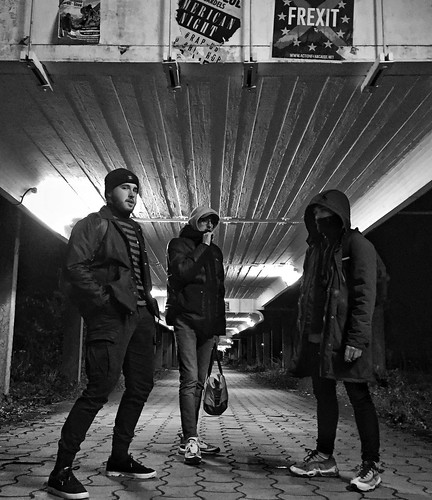Enario C was defined as the introduction of Swisswide mandatory control measures as currently implemented in the cantons of GR and GL, but like the usage of the PCR diagnostic test. The impact on the PCR diagnostics can therefore be observed by comparing situation C with B. Shortly after the implementation from the control measures, the prevalence decreases even more quickly than in scenario B. Beginning at a nationwide median ofGSA AnalysisTwo parameters had been detected to mostly influence footrot prevalence (the outcome of the model). They are the recovery rate and reversion rate with total effect Sobol Homotaurine indices of . and respectively. To a reduced extent, infection rate (total effect Sobol index .) and the variety of susceptible herds atFrontiers in Veterinary Science Zingg et al.Evaluation of Footrot Management in SwitzerlandTABLE Cost and advantage of footrot management for (in , CHF). Situation Management costs Onfarm labor Thirdparty labor Material expense Total costs A B C D (to ) Financial consequences for footrot development Advantage from shorter fattening time Intangible cost (animal welfare and others)The discount factor is . All price and benefit are expressed in continual prices. Direct expense and remedy expense are summed over time of the management period . The self-confidence interval is reported in parenthesis. The total net financial impact is presented in Table . Expense differences between modest, medium, and significant farms are taken into account. Composition from the expense categories depends on the situation. Onfarm labor fees are calculated as CHFh occasions the farm personnel’s time estimated for foot bathing, hoof trimming, and presence at clinical inspections or collection of samples for diagnostic tests. Thirdparty fees incorporate clinical inspections by hoof controllers and veterinaries and diagnostic tests. Material expenses incorporate water and zinc sulfate. The saved expenses associated using the reduction of fattening time have been calculated by Isorhamnetin assuming  that the costs per animal are PubMed ID:https://www.ncbi.nlm.nih.gov/pubmed/23581242 . CHFday, and animals are not prematurely slaughtered. Intangible expenses are calculated primarily based on national prevalence prices, offered the outcomes from the expert elicitations.the starting in the simulation (total effect Sobol index .) also resulted in Sobol indices slightly larger than for the other parameters, which range from . to . (Figure S in Supplementary Material). The total effect Sobol index also integrated the interactions amongst the respective parameter and with all other parameters tested inside the GSA.TABLE Net economic impact of scenario B compared to situation A (laisserfaire) in , CHF. Scenario B C DCost and Benefit EvaluationTable summarizes the price and benefit of footrot management below the four management scenarios for . Among the elements of management price, labor price accounted for the largest share in total expense. The smallest management fees were identified under situation C, plus the highest costs had been anticipated with scenario D. In comparison to situation C, labor costs below scenario B have been substantially bigger. This can be for the reason that PCR tests are less labor demanding than footrot inspections and this consists of both, onfarm labor too as thirdparty labor. The majority of the total management charges of situation C take place within the initial years right after the management approach was implemented, and cost decreases substantially within the following years as the prevalence price drops. For the added benefits, it was located that beneath scenario D, the fattening ti.Enario C was defined as the introduction of Swisswide mandatory handle measures as at the moment implemented in the cantons of GR and GL, but including the use of the PCR diagnostic test. The impact with the PCR diagnostics can consequently be observed by comparing scenario C with B. Shortly just after the implementation of the manage measures, the prevalence decreases much more quickly than in situation B. Beginning at a nationwide median ofGSA AnalysisTwo parameters have been detected to largely influence footrot prevalence (the outcome of your model). They are the recovery price and reversion price with total effect Sobol indices of . and respectively. To a decrease extent, infection price (total effect Sobol index .) plus the variety of susceptible herds atFrontiers in Veterinary Science Zingg et al.Evaluation of Footrot Management in SwitzerlandTABLE Expense and benefit of footrot management for (in , CHF). Situation Management expenses Onfarm labor Thirdparty labor Material price Total costs A B C D (to ) Financial consequences for footrot development Advantage from shorter fattening time Intangible expense (animal welfare and others)The discount aspect is . All expense and advantage are expressed in continual rates. Direct cost and therapy price are summed over time on the management period . The confidence interval is reported in parenthesis. The total net financial impact is presented in Table . Cost variations involving smaller, medium, and large farms are taken into account. Composition of the price categories depends upon the scenario. Onfarm labor fees are calculated as CHFh occasions the farm personnel’s time estimated for foot bathing, hoof trimming, and presence at clinical inspections or collection of samples for diagnostic tests. Thirdparty fees include clinical inspections by hoof controllers and veterinaries and diagnostic tests. Material costs contain water and zinc sulfate. The saved expenses connected with the reduction of fattening time have been calculated by assuming that the expenses per animal are PubMed ID:https://www.ncbi.nlm.nih.gov/pubmed/23581242 . CHFday, and animals will not be prematurely slaughtered. Intangible costs are calculated based on national prevalence prices, provided the outcomes from the expert elicitations.the beginning from the simulation (total effect Sobol
that the costs per animal are PubMed ID:https://www.ncbi.nlm.nih.gov/pubmed/23581242 . CHFday, and animals are not prematurely slaughtered. Intangible expenses are calculated primarily based on national prevalence prices, offered the outcomes from the expert elicitations.the starting in the simulation (total effect Sobol index .) also resulted in Sobol indices slightly larger than for the other parameters, which range from . to . (Figure S in Supplementary Material). The total effect Sobol index also integrated the interactions amongst the respective parameter and with all other parameters tested inside the GSA.TABLE Net economic impact of scenario B compared to situation A (laisserfaire) in , CHF. Scenario B C DCost and Benefit EvaluationTable summarizes the price and benefit of footrot management below the four management scenarios for . Among the elements of management price, labor price accounted for the largest share in total expense. The smallest management fees were identified under situation C, plus the highest costs had been anticipated with scenario D. In comparison to situation C, labor costs below scenario B have been substantially bigger. This can be for the reason that PCR tests are less labor demanding than footrot inspections and this consists of both, onfarm labor too as thirdparty labor. The majority of the total management charges of situation C take place within the initial years right after the management approach was implemented, and cost decreases substantially within the following years as the prevalence price drops. For the added benefits, it was located that beneath scenario D, the fattening ti.Enario C was defined as the introduction of Swisswide mandatory handle measures as at the moment implemented in the cantons of GR and GL, but including the use of the PCR diagnostic test. The impact with the PCR diagnostics can consequently be observed by comparing scenario C with B. Shortly just after the implementation of the manage measures, the prevalence decreases much more quickly than in situation B. Beginning at a nationwide median ofGSA AnalysisTwo parameters have been detected to largely influence footrot prevalence (the outcome of your model). They are the recovery price and reversion price with total effect Sobol indices of . and respectively. To a decrease extent, infection price (total effect Sobol index .) plus the variety of susceptible herds atFrontiers in Veterinary Science Zingg et al.Evaluation of Footrot Management in SwitzerlandTABLE Expense and benefit of footrot management for (in , CHF). Situation Management expenses Onfarm labor Thirdparty labor Material price Total costs A B C D (to ) Financial consequences for footrot development Advantage from shorter fattening time Intangible expense (animal welfare and others)The discount aspect is . All expense and advantage are expressed in continual rates. Direct cost and therapy price are summed over time on the management period . The confidence interval is reported in parenthesis. The total net financial impact is presented in Table . Cost variations involving smaller, medium, and large farms are taken into account. Composition of the price categories depends upon the scenario. Onfarm labor fees are calculated as CHFh occasions the farm personnel’s time estimated for foot bathing, hoof trimming, and presence at clinical inspections or collection of samples for diagnostic tests. Thirdparty fees include clinical inspections by hoof controllers and veterinaries and diagnostic tests. Material costs contain water and zinc sulfate. The saved expenses connected with the reduction of fattening time have been calculated by assuming that the expenses per animal are PubMed ID:https://www.ncbi.nlm.nih.gov/pubmed/23581242 . CHFday, and animals will not be prematurely slaughtered. Intangible costs are calculated based on national prevalence prices, provided the outcomes from the expert elicitations.the beginning from the simulation (total effect Sobol  index .) also resulted in Sobol indices slightly larger than for the other parameters, which variety from . to . (Figure S in Supplementary Material). The total impact Sobol index also integrated the interactions among the respective parameter and with all other parameters tested in the GSA.TABLE Net financial effect of scenario B compared to scenario A (laisserfaire) in , CHF. Situation B C DCost and Benefit EvaluationTable summarizes the price and benefit of footrot management under the four management scenarios for . Amongst the components of management cost, labor price accounted for the biggest share in total cost. The smallest management expenses were located under situation C, plus the highest costs have been expected with situation D. In comparison to scenario C, labor fees under scenario B were substantially larger. This really is for the reason that PCR tests are less labor demanding than footrot inspections and this involves each, onfarm labor at the same time as thirdparty labor. Most of the total management costs of scenario C take place inside the initial years just after the management strategy was implemented, and cost decreases substantially within the following years because the prevalence rate drops. For the positive aspects, it was found that beneath situation D, the fattening ti.
index .) also resulted in Sobol indices slightly larger than for the other parameters, which variety from . to . (Figure S in Supplementary Material). The total impact Sobol index also integrated the interactions among the respective parameter and with all other parameters tested in the GSA.TABLE Net financial effect of scenario B compared to scenario A (laisserfaire) in , CHF. Situation B C DCost and Benefit EvaluationTable summarizes the price and benefit of footrot management under the four management scenarios for . Amongst the components of management cost, labor price accounted for the biggest share in total cost. The smallest management expenses were located under situation C, plus the highest costs have been expected with situation D. In comparison to scenario C, labor fees under scenario B were substantially larger. This really is for the reason that PCR tests are less labor demanding than footrot inspections and this involves each, onfarm labor at the same time as thirdparty labor. Most of the total management costs of scenario C take place inside the initial years just after the management strategy was implemented, and cost decreases substantially within the following years because the prevalence rate drops. For the positive aspects, it was found that beneath situation D, the fattening ti.
